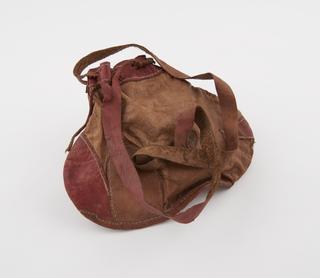


Specimen of raw flint

Flint

Roughly-worked gun-flint

Flint, finely worked round edge

Flint (a small rough lump of chert; length 1 in)

A series of thirteen Gun- and Pistol-flints

One of a group of various worked flints made at Valona

Leather firebag containing steel, tinder, pipe, and flint
1890-1920

Tinder-pouch of bright red leather
before 1937

Three pieces of flint (glass) used for glazing

Flint Adze Danish

Flint

Flint from Vlora, Albania

Flint
Raw flint
Flint after grinding by mill
Flint hydraulic unit for butane pocket lighters
1966
Striking flint and piece of haematite
Flint from collection of fire making devices
1910-1950
Flint from collection of fire making devices
1910-1950
One of a group of various worked flints made at Valona
One of a group of various worked flints made at Valona
One of a group of various worked flints made at Valona
One of a group of various worked flints made at Valona
Flint and steel in flat tin holder
Cloth firebag containing tinder
1850-1920
Fitted flint
Steel hand striker with piece of flint
Tinder box and contents for firemaking
Flint from collection of fire making devices
1910-1950
Calibri Monoflint from collection of fire making devices
1910-1950
Flint from collection of fire making devices
1910-1950
Flint from collection of fire making devices
1910-1950
Flint from collection of fire making devices
1910-1950
Flint from collection of fire making devices
1910-1950
One of a group of various worked flints made at Valona
One of a group of various worked flints made at Valona
Flint Flake
Cloth firebag containing steel
1850-1920
Flint core
1918-1920